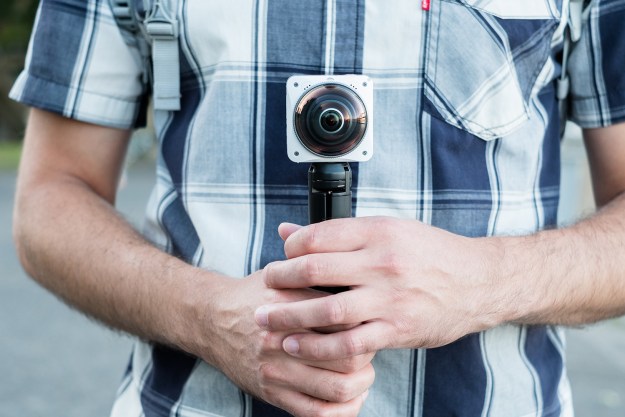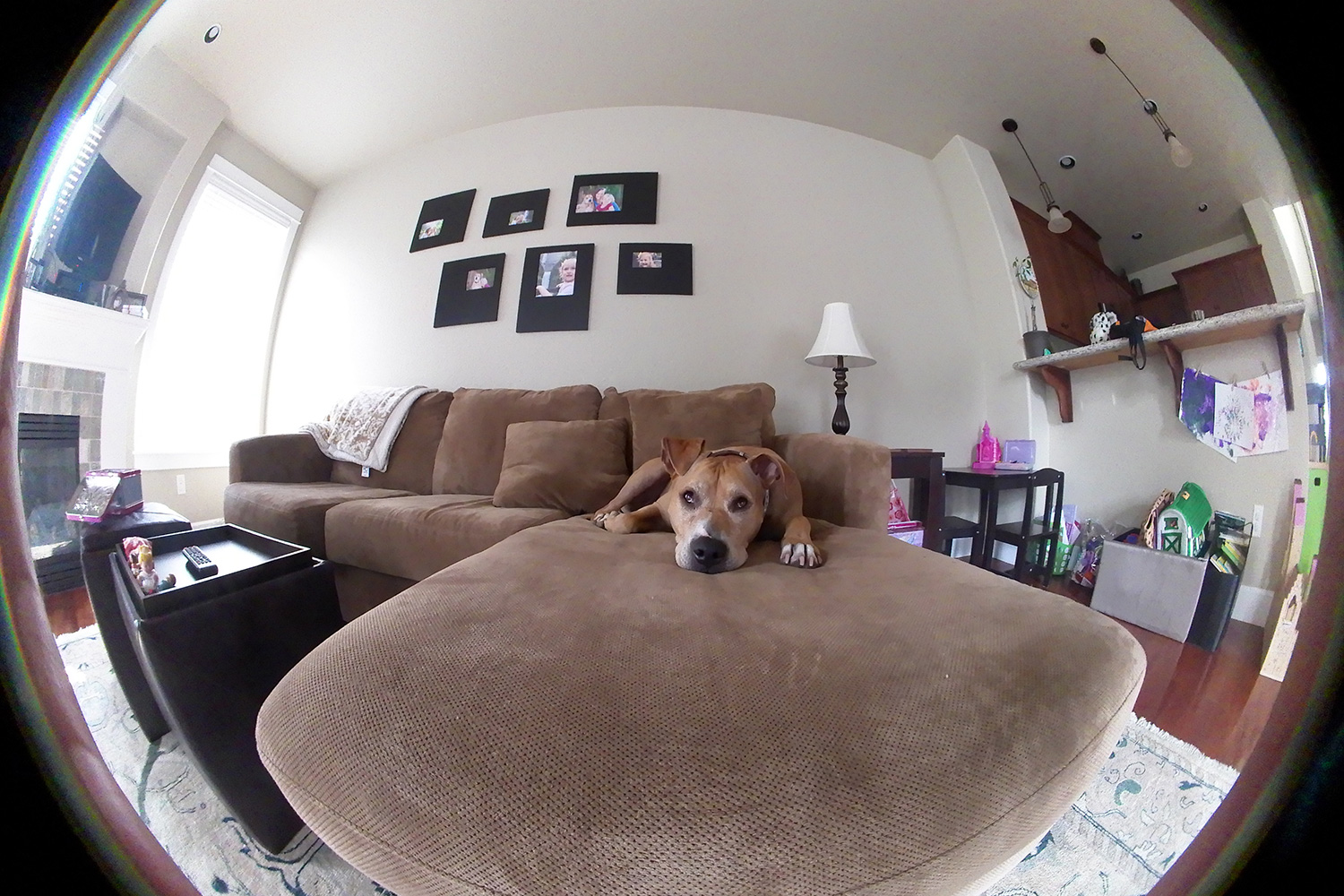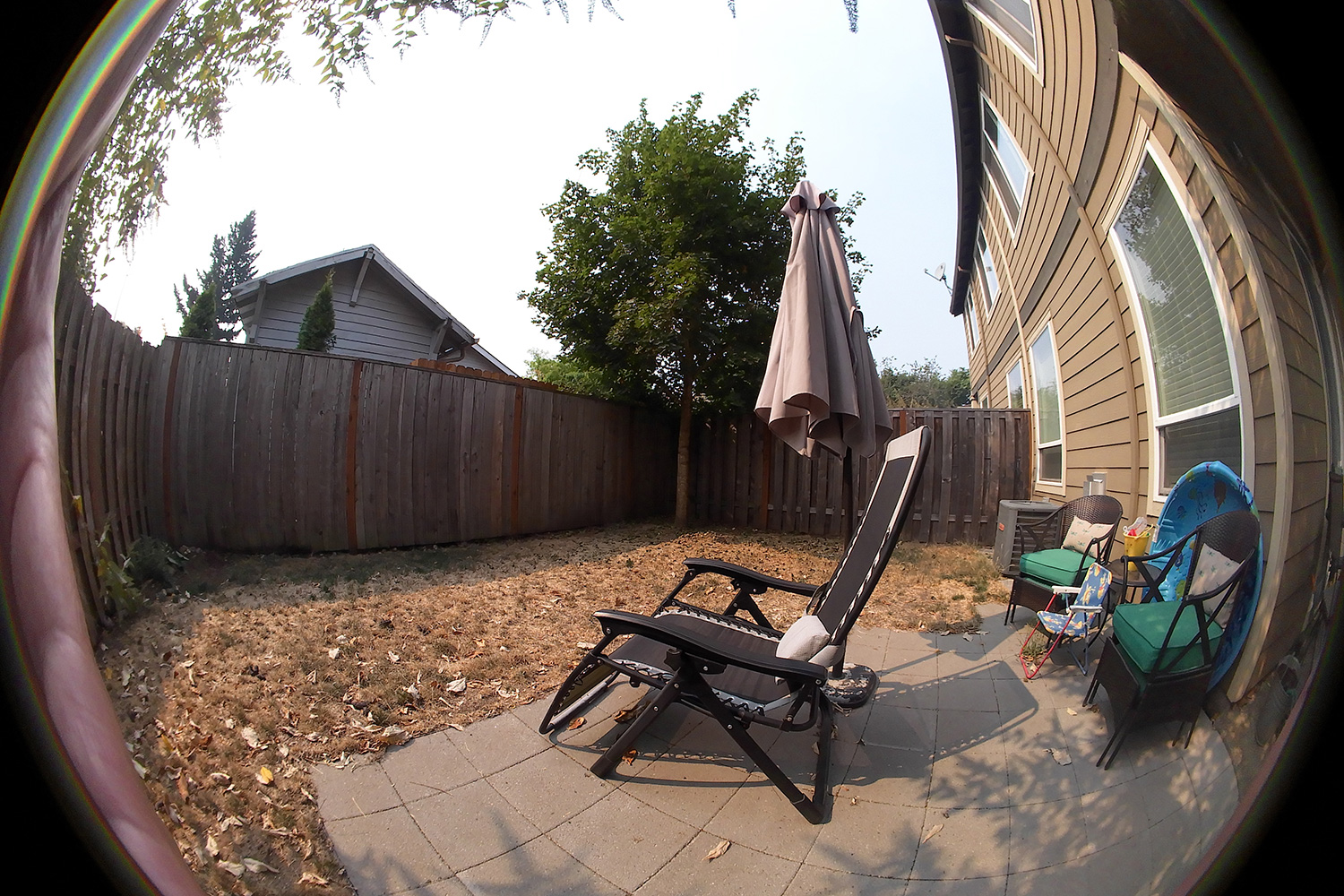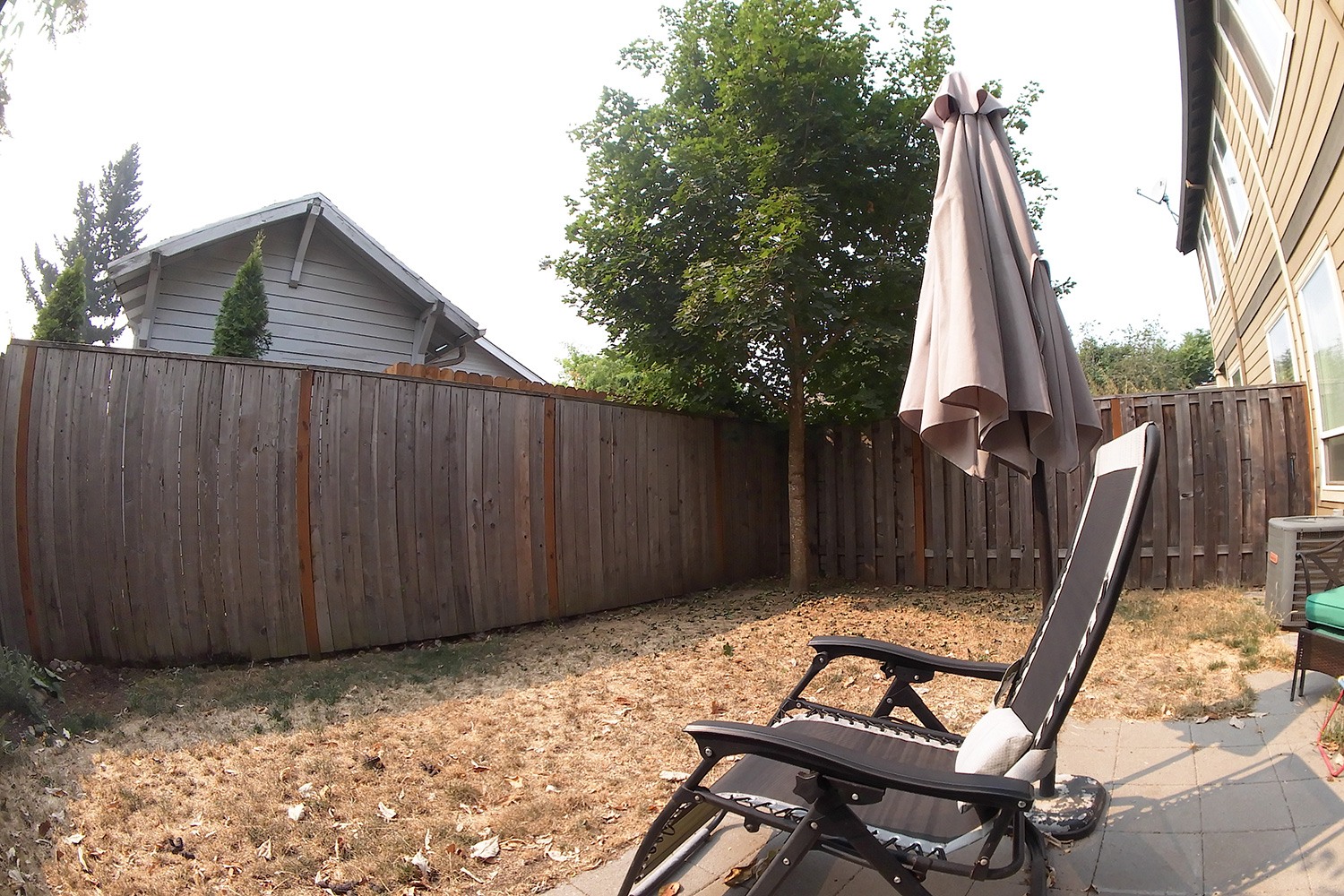
“Immersive video is the wrong game to bet on the Kodak name.”
- Weatherproof
- “Front” and “Dome” lenses capture unique images
- Mobile app relatively easy to use
- Satellite Pack adds Bluetooth remote, selfie stick
- Too expensive
- Poor video quality
- Over-processed still images
- Stitching line clearly noticeable
- Desktop app feels very dated
The Pixpro Orbit360 4K is the latest 360-degree camera to come out of the licensing agreement between Kodak and Los Angeles-based JK Imaging. The arrangement was part of the terms of Kodak’s bankruptcy filing, which led the once dominant film and camera company to cease all production of its own cameras. So while the Orbit360 wears the familiar red and gold, it is not really a true Kodak product. As we’ll explore in our Kodak Pixpro Orbit360 4K review, it offers some innovative features but falls well short of standing above the crowd.
Design and specifications
A bit smaller than a baseball, like most consumer 360-degree cameras, the Orbit360 is meant to be taken anywhere. It bears an uncanny resemblance to Nikon’s KeyMission 360, with two hemispherical lenses sit aside a rectangular, plastic body. The battery, MicroSD card slot, HDMI port, and USB port are all housed beneath a locking door with a hefty gasket on it. The camera is not advertised as being waterproof, but it does meet IPX5 splash-proof and IP6X dust-proof standards, so it should handle rain and inclement weather without issue.
Dual 20-megapixel CMOS sensors capture 4K spherical video and up to 27MP spherical still photos. Where things get interesting is with the lenses. Immersive video cameras typically pair two 180-degree lenses together, but the Orbit360 does things differently. One lens (labeled “Front”) is just 155 degrees, while the other (labeled “Dome”) is 235. This combines for a full 360 degrees of coverage (with some overlap for stitching) but it also allows the camera to shoot in two other unique modes.
With just the Front lens turned on, a standard video (or still photo) is recorded with an ultra-wide angle of view (which equates to 197 degrees in a 16:9 ratio). Switch to the Dome lens, and now the camera shoots a circular fisheye perspective, preserving the entire field of view without cropping. Since the Dome lens is wider than 180-degrees, it even includes areas of the scene that are slightly behind it, which can make it difficult to leave unwanted objects (like your hand that’s holding the camera) out of the photo.
User experience
Four on-camera buttons, in conjunction with a small information display, offer full control over the camera’s various functions. The interface is as good as you’d expect for a camera that’s dominated by twin lenses and doesn’t have room for a large LCD. Like the LCD in the Pixpro SP360 we reviewed in 2015, you’re likely to have a bit of trial and error before you remember how to navigate the menu system.
There’s a decent amount of settings you have control over. There’s no manual exposure mode, but you can set exposure compensation to brighten or darken the image.
The Pixpro 360 VR Remote Viewer app (available for iOS and Android) provides another way to control the camera, thanks to the Orbit360’s built-in Wi-Fi. The app is easy enough to understand, but the live preview suffers from a slow frame rate, and quality drops dramatically once you start recording. While you can save recorded video clips and still photos to your phone or share straight to social media, you cannot go live, putting the Orbit360 one step behind cameras like the new Samsung Gear 360. Saving videos over Wi-Fi can also take eons, so think twice before exporting anything over a minute.
The base camera kit sells for $500, but we tested the $550 Satellite Pack, which includes, among other things, a wearable Bluetooth remote. The remote, which comes with a wrist strap and resembles a watch, offers another way to control the camera’s primary functions. Both kits include a small tripod that also serves as a handle, and the Satellite Pack comes with a short selfie stick that gives you more reach.
For the most part, we could rate our experience with the Pixpro Orbit360 on the lesser side of average.
For the most part, we would rate our experience with the Pixpro Orbit360 on the lesser side of average, but one detail we appreciated was the use of two separate tally lamps, one for each lens. A small LED will glow to indicate which lens is active; in 360-degree mode, both LEDs light up. In Front or Dome mode, the active tally lamp will hopefully remind users to keep the camera pointed in the right direction, with the active lens forward.
In addition to the mobile app, there is a desktop app available for both MacOS and Windows that allows users to review and edit footage. You can select an angle to output as a standard fixed-frame video, or you can output the entire “equirectangular” field if you want to upload it to a 360-enabled video service, like YouTube or Facebook. (You might want to check out YouTube’s updated guidelines on how to upload 360-degree content.)
Image quality
When shooting the Orbit360 in 360-degree mode, you can more-or-less set it and forget it, as it captures a full spherical field of view. However, it helps to point one of the lenses toward any critical elements in the shot, as the stitching line (where the two hemispheres are joined) is fairly prominent and can distort objects as they pass over it. Also, extreme differences in light in the scene can cause exposure-blending issues between the two lenses, or cause one lens to flare, resulting in an even more obvious stitching line.
Any time a dual-lens 360 camera advertises “
Resolution also depends on lens quality. As we’ve seen in other 360 cams (and other lenses in general) the Orbit360’s lenses are softer toward their edges, so image quality degrades as you approach the stitch line. This issue isn’t unique to the Orbit360, but it is a good reminder that small, immersive video cameras still lag far behind the image quality of multi-camera VR rigs.
Still images are saved at much higher resolution (27MP) compared to video, but suffer from extreme JPEG processing. Aggressive noise reduction and sharpening, lead to a nontrivial loss of detail that’s noticeable as soon as you look at an image on any screen larger than a smartphone.
Warranty
JK Imaging offers a one-year warranty on all Kodak-branded cameras.
Our Take
We can’t argue that the Kodak brand carries some weight. That said, it’s not a name synonymous with digital camera success stories. Slapping “Kodak” on the box of a 360-degree camera may not have the power that JK Imaging was hoping for. Kodak simply isn’t known as a player in this arena the way a company like Samsung is, which also produces the phones and VR headsets that such cameras connect to.
When all is said and done, the Pixpro Orbit360 is valuable only as a novelty.
Still, the Orbit360 isn’t necessarily bad — it’s just not great. Image quality is so-so, with soft video, over-processed still images, and noticeable stitching lines. The different angles of view between the two lenses allow for one creative advantage over other 360 cams, but that’s not likely a huge deal for most users. At least, the camera is easy enough to use, although the desktop app did feel like it was built with Windows XP in mind — even the MacOS version.
When all is said and done, the Pixpro Orbit360 is valuable only as a novelty. Its sole saving grace is that many other 360 cams are the same way, although most sell for considerably less. It feels more like a camera that a well-intentioned relative would buy as a gift for his or her photographically inclined family member. We doubt many photographers, casual or otherwise, will purchase it for themselves.
Is there a better alternative?
We liked both the Samsung Gear 360 and diminutive Giroptic iO, which are both under $300, although the latter doesn’t offer
How long will it last?
The one thing that pleasantly surprised us about the Pixpro Orbit360 was the build quality. While it uses a liberal amount of plastic in its construction, it nevertheless feels well made, with good dust and splash proofing. It should hold up to normal wear and tear without issue.
On the downside, consumer immersive video is still a nascent industry, and its products are evolving rapidly. The landscape will likely look much different in a year or two, and new cameras that will easily outclass the Orbit360 are already in the pipeline.
Should you buy it?
Nah. Dropping $500 on any 360 cam right now doesn’t make a lot of sense, except to users who understand the drawbacks of being an early adopter and don’t mind buying something just for the novelty of it. And for those who want to take a less risky gamble, the Samsung Gear 360 is both cheaper and has live-streaming capabilities. The Pixpro Orbit360 is not a bad product, and does have one novel feature, but the Kodak name and a few included accessories are not enough to justify the price.

















